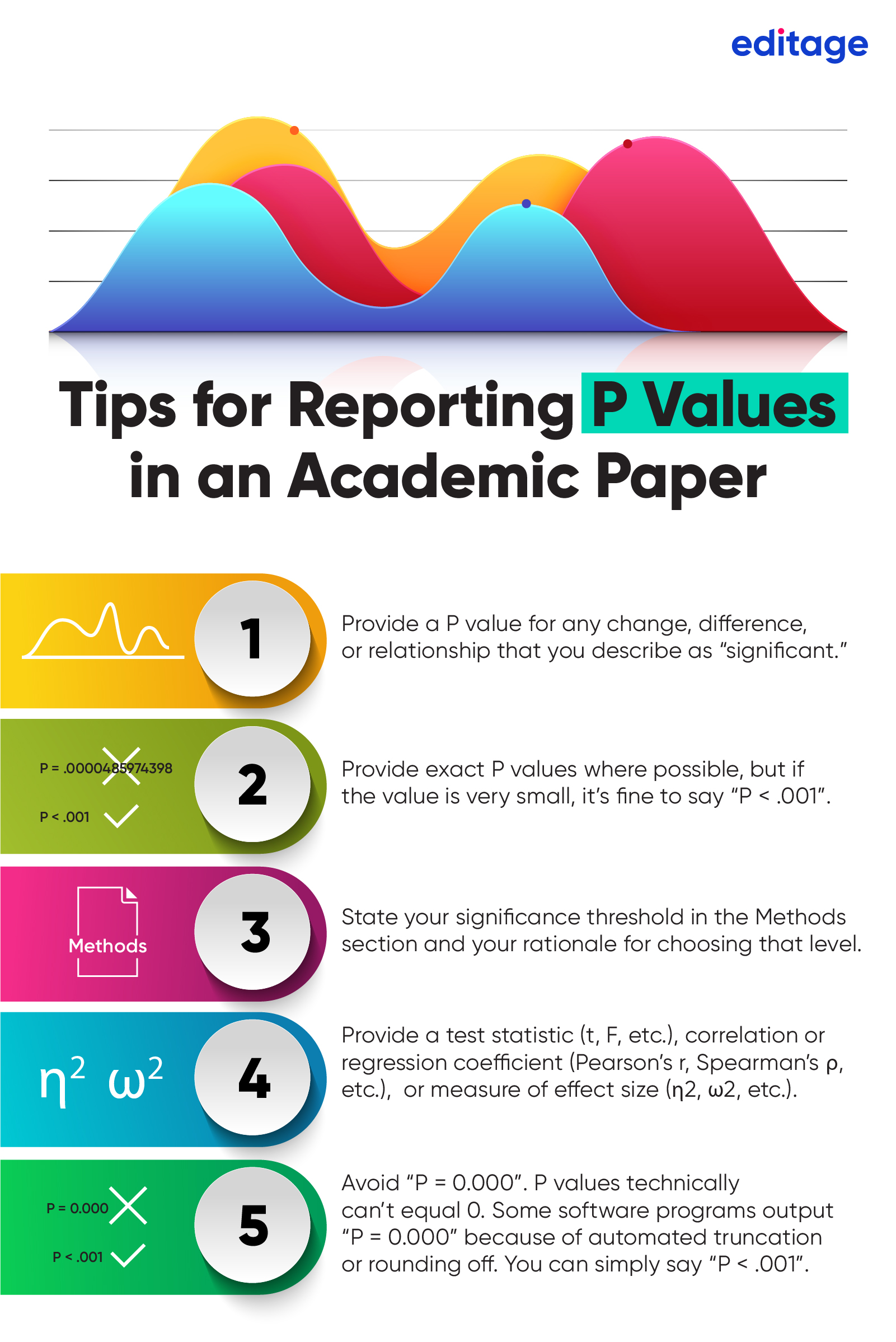Reporting P values: A handy guide for biomedical researchers

P values are one of the most commonly reported types of statistical data in biomedical research papers. In hypothesis testing, they are a measure of the strength of evidence against a null hypothesis, indicating how likely it is that your results could have been obtained if the null hypothesis had been true. In general, p values tell readers only whether any relationship, difference between groups, etc., is likely to be due to chance or to the variable(s) you are studying.
Researchers usually set a cut-off for p values (.05, .01, or .001), which is known as the significance threshold. If the p value obtained falls below the cutoff, the accompanying result is deemed “statistically significant.”
Although p values are commonly used, they need to be reported carefully so that your paper provides strong and useful evidence. Below are some key points you need to keep in mind:

How to Report P Values
Let’s look at some examples of how to report P values:
Avoid: We found a significant relationship between dietary fiber intake and systolic blood pressure (p < .05).
Explanation: Readers only know that this relationship is unlikely to be due to chance. They don’t know how strong this relationship or its direction (i.e., did participants with higher dietary fiber have lower systolic blood pressure or did they have higher systolic blood pressure?).
Solution: If you add “r = -.78” in the parentheses at the end of the above sentence, your readers will understand that this is a strong inverse relationship. Thus, they get a better idea of your actual findings.
Here’s another example:
Avoid: We found a significant difference in mean HbA1c levels between the smoker and non-smoker groups (P < .05).
Explanation: Readers need to know how large this difference actually is. For instance, a mean HbA1c difference below 0.1 suggests that smoking status does not account for a meaningful difference in HbA1c levels. Also, readers don’t know what statistical test was used to calculate this difference.
Solution: Provide the actual mean HbA1c levels for the two groups and include the test statistic (t, F, etc.).
As you can see in the above example, a result can be statistically significant without being actually useful. “Statistically significant” does not necessarily mean that the result is clinically meaningful or important from a practical perspective. P values tell readers a little about your findings, but if you want to create an impactful research paper with high-quality evidence, you will need to report more than just p values.
Would you like personalized support in designing a statistically sound study and in conducting robust data analyses? Book your consultation with an expert biostatistician through Editage’s Statistical Analysis & Review Service.


